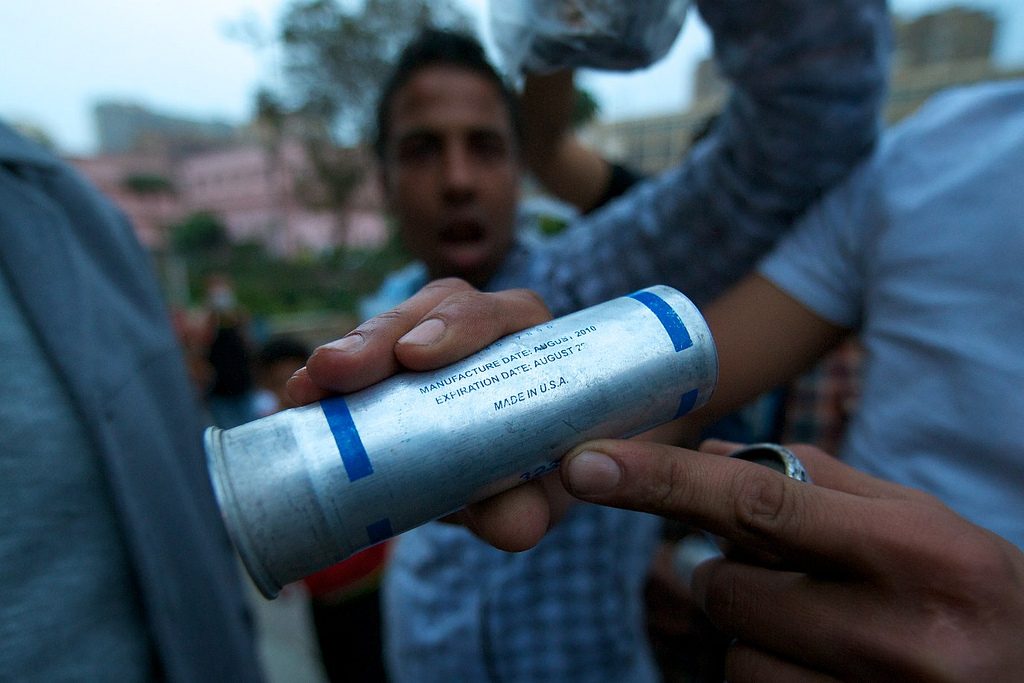
Over the past two days, soldiers and military police have used almost everything within arm’s reach — fire hoses, batons, thrown rocks, furniture and glass projectiles — to break up crowds in Tahrir Squre and outside of the Council of Ministers Building. But while the military has been re-purposing everyday objects into deadly weapons, the one thing conspicuously missing from their arsenal is the SCAF’s tried and true crowd suppressant, tear gas. As The Arabist notes on Twitter, "One of the most bizarre thing about the #occupycabinet clashes is that, amidst all its violence, the army is refraining from using tear gas."
The SCAF certainly didn’t hesitate to deploy copious amounts of CS (tear) gas during the last crackdown in late November, and allegedly used two even more potent incapacitating agents, CR and CN gas, which can both induce seizures in some cases. So why is the SCAF suddenly holding back on tear gas, while showing no such restraint with other crowd control measures, such as stripping and beating unarmed protesters with batons?
There are a couple of potential explanations for the shift in tactics:
(1) There are some indications that the military may be close to exhausting its supply of tear gas. On December 2, Ahram reported that port workers in Suez refused to receive the first 7-tons of a 21-ton tear gas shipment ordered by the Interior Ministry "to restock after firing tear gas at protesters in Egypt for six days." A week later, US State Department spokesman Mark Toner said that besides the 21-ton shipment in late November, "There are no additional shipments that we’re aware of and no additional licenses that we’re aware of.” With the U.S. Congress seeking to impose restrictions on the sale of tear gas and other munitions, Egypt seek crowd suppressants from other international suppliers. British-made tear gas was also used against protesters in November, although it reportedly reached Egypt via a third country. Still, the United States has accounted for the majority of tear gas shipments to Egypt since 2005, and the expiration of U.S. export licenses and suspension of shipments suggests Egypt’s CS gas arsenal is probably dwindling.
(2) Another, less likely explanation is that the SCAF is sticking to the promise of newly appointed Interior Minister Major General Mohamed Ibrahim Yusuf, who recently vowed that security forces would not use tear gas against protesters. But the SCAF has been breaking promises faster than it can reshuffle the Cabinet, and the military’s word no longer carries much weight on the street, especially when the message is delivered with flying rocks, batons, and live bullets. As Nelly Ali, currently working on her dissertation in Cairo, asked sarcastically on Twitter, "Can you take back your tear gas promise and stop throwing us with live ammunition instead?! Thanks."
Mara Revkin is the assistant director of the Rafik Hariri Center for the Middle East and editor of EgyptSource. She can be reached at mrevkin@acus.org.
Photo Credit: Charles Onians
Image: egypt-revolution6.jpg
